10 Iconic Pyrex Dishes from the 1950s and 1960s
Pyrex dishes were a defining feature of kitchens in the 1950s and 1960s. Their vibrant colors and durable design made them a go-to choice for home cooks. These pieces were more than just cooking tools; they were a symbol of the times. From everyday meals to special occasions, Pyrex played an important role in American households. Let us dive into the iconic Pyrex dishes that helped shape kitchen culture during these decades.
This post may contain affiliate links, which helps keep this content free. Please read our disclosure for more info.
Pyrex Crazy Daisy (Spring Blossom)

The Crazy Daisy pattern, also known as Spring Blossom, was first introduced by Pyrex in the late 1950s. This pattern featured delicate white floral motifs on a light green background, making it an ideal choice for kitchenware during the time. The design was simple yet elegant, reflecting the growing trend of floral patterns in the 1950s. Today, the value of a complete set of Crazy Daisy can range from $40 to $200, depending on the condition and the specific pieces in the set.
These dishes were popular due to their versatility and practicality, often found in both kitchen and dining spaces. The pattern’s timeless appeal has made it highly sought after by collectors of vintage Pyrex. A well-maintained set can fetch higher prices, especially if it includes rare or hard-to-find pieces like the casserole dish or serving bowl. Whether for display or use, Crazy Daisy remains a beloved part of Pyrex history.
Pyrex Butterprint
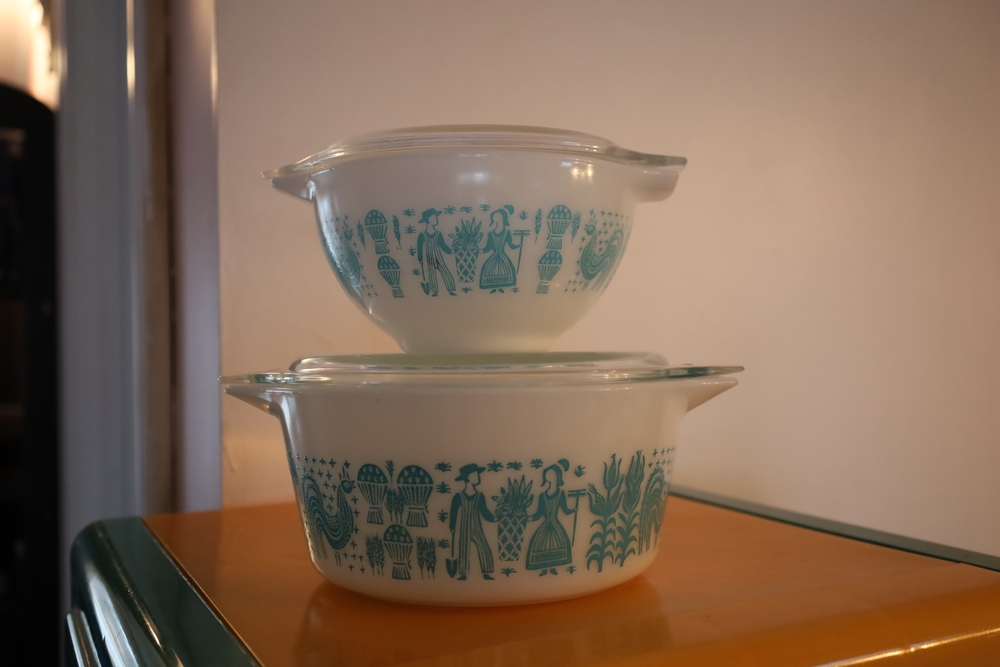
Introduced in 1957, the Butterprint pattern features intricate farm-themed designs of chickens and wheat stalks in white against a turquoise background. This pattern became one of Pyrex’s most beloved designs, symbolizing mid-century modern American life. The Butterprint design was featured on a variety of dishes, including mixing bowls, casserole dishes, and measuring cups. Today, these vintage pieces can range in price from $40 to $150, depending on the piece’s size and condition.
The Butterprint Pyrex was not only known for its aesthetic appeal but also for its functionality. The design represented the 1950s’ appreciation for rural, farm-inspired themes while still maintaining a modern touch. Collectors often look for the turquoise blue versions, which are among the most highly prized. These pieces continue to be highly collectible due to their classic design and nostalgic value.
Pyrex Flameware
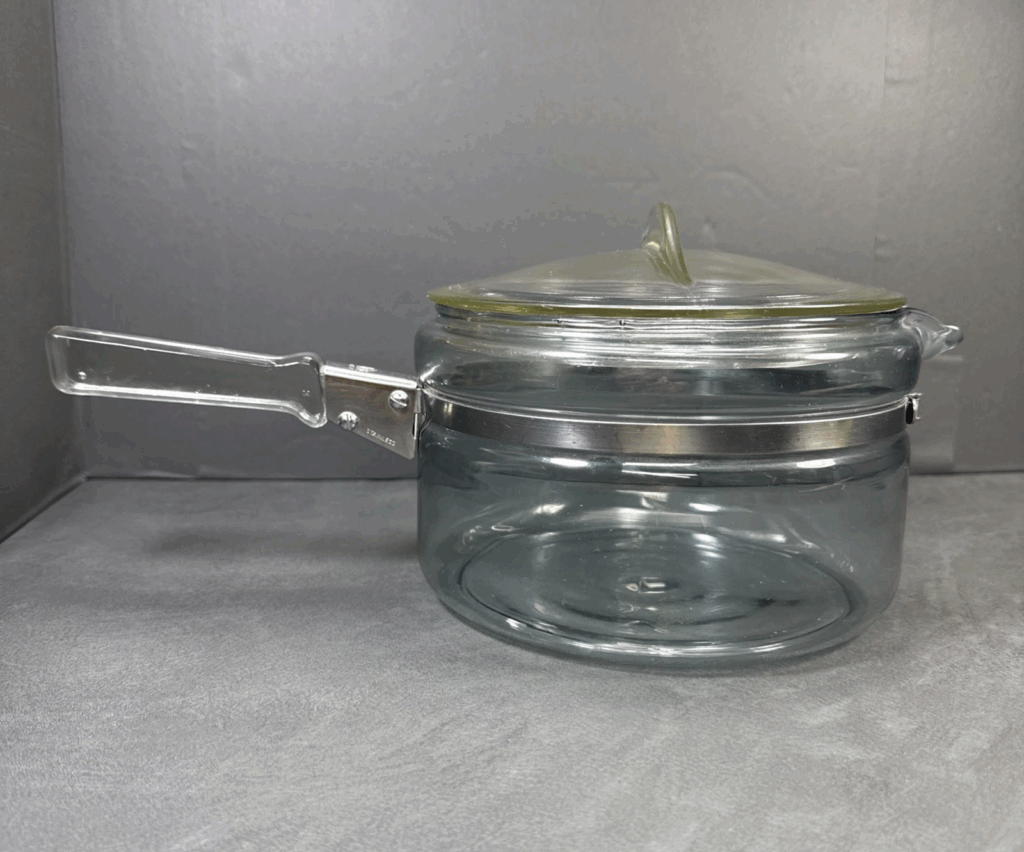
Pyrex Flameware was introduced in the 1960s and is known for its ability to withstand direct heat. The design features a simple, modern look with a mix of clear glass and red or black accents. These durable glass pieces were perfect for stovetop cooking, offering practicality while maintaining a stylish appearance. The value of Flameware pieces varies, with most items priced between $20 and $100, though rare pieces can go for as much as $200.
Flameware was revolutionary for its time, offering a heat-resistant design that made it safe for stovetop cooking. The clean, sleek lines of the Flameware design made it a popular choice for modern kitchens in the 1960s. The red, white, and black versions are particularly sought after by collectors, especially if they are in good condition. The functional and stylish nature of these pieces has ensured their lasting popularity.
Pyrex Snowflake
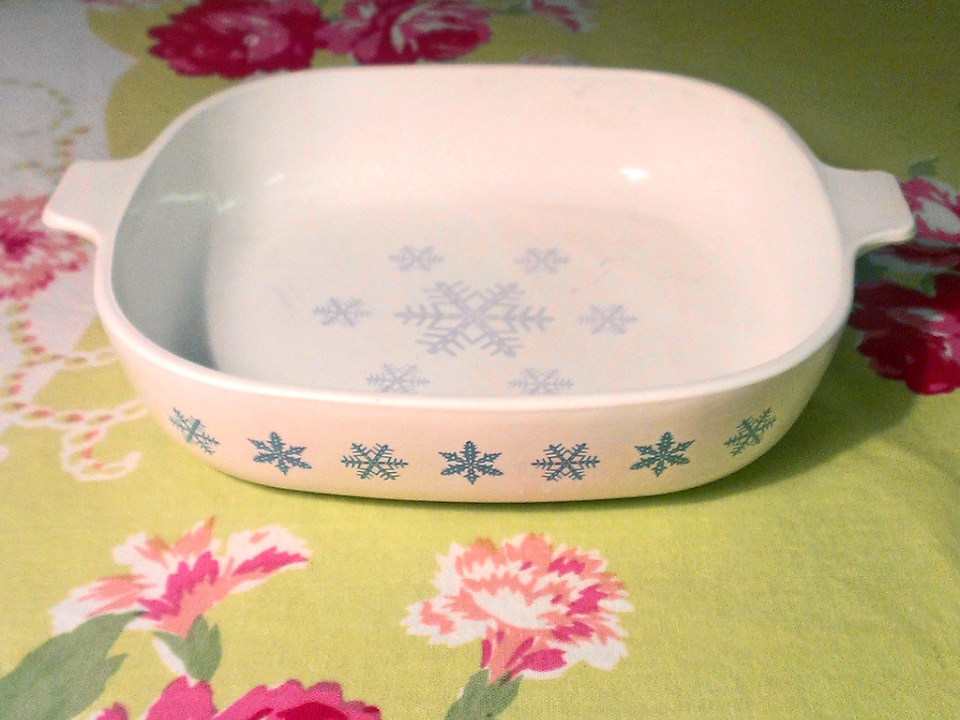
Released in the late 1950s, the Snowflake pattern featured white snowflakes on a blue background, evoking the feeling of winter. The pattern became especially popular during the holidays, making it a go-to option for winter meals and entertaining. The design’s simplicity and seasonal appeal made it a classic. Today, the Snowflake pattern typically sells for around $25 to $150, with some pieces in excellent condition reaching higher prices.
The Snowflake Pyrex dishes are still highly desirable for collectors of vintage kitchenware. While not as common as some other Pyrex patterns, the snowflake motif has remained a popular design, especially during the colder months. Items such as mixing bowls, casseroles, and storage dishes are the most sought after. These pieces continue to be a seasonal favorite and are often passed down through generations.
Pyrex Delphite Blue

The Delphite Blue was introduced in the early 1960s and featured a soft, solid blue color with a smooth, glossy finish. Unlike patterned Pyrex, the solid color of Delphite gave it a more modern and minimalist look, making it a popular choice for those who wanted simplicity. The dishes included everything from mixing bowls to refrigerator dishes. Today, a set of Delphite Blue Pyrex can sell for $50 to $300, depending on its condition and rarity.
The soft blue color was a standout in kitchens during the 1960s, and it complemented a wide range of interior designs. While the patternless design was more minimal, it was highly practical for daily use. Some rare pieces, especially those with original lids or in excellent condition, can fetch a premium. Collectors continue to appreciate Delphite for its simplicity and timeless appeal.
Pyrex Pink Daisy
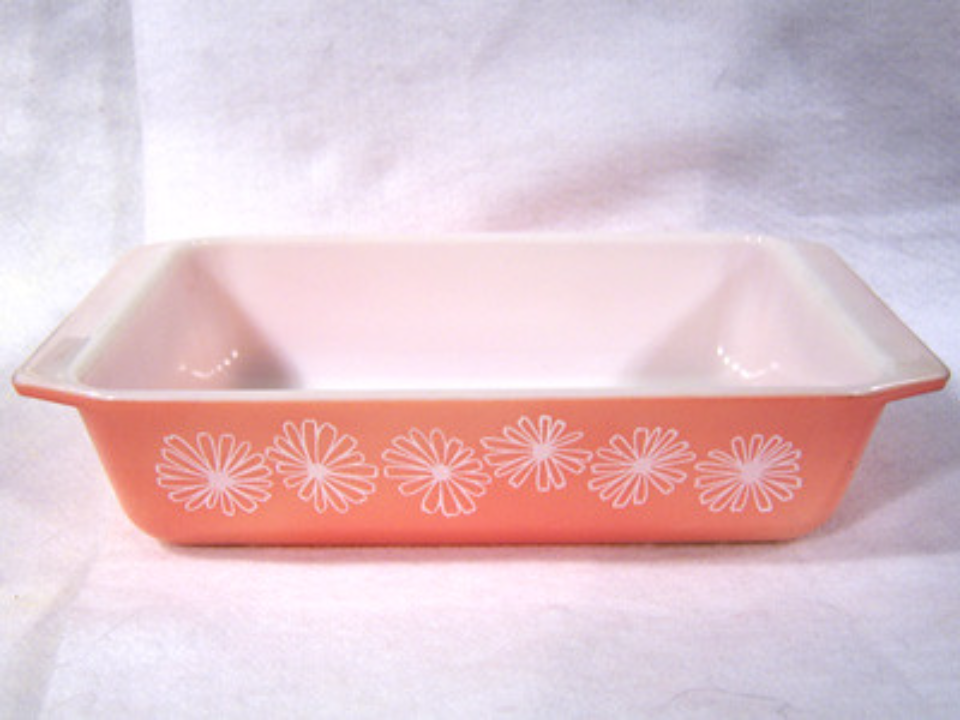
The Pink Daisy pattern, which appeared in the late 1950s and early 1960s, features soft pink daisies set against a white background. This design was popular for its feminine and delicate look, which appealed to many homeowners at the time. Available in several sizes of mixing bowls, casserole dishes, and serving bowls, the Pink Daisy Pyrex became a staple in many kitchens. Today, it is valued between $40 and $200, depending on the item’s rarity and condition.
The soft color palette and timeless design made the Pink Daisy pattern a favorite among collectors. This pattern was also part of Pyrex’s effort to introduce lighter, more colorful designs that were functional and stylish. Today, collectors look for pieces in excellent condition with no fading or cracks. The Pink Daisy design remains one of the most iconic Pyrex patterns from the 1960s.
Pyrex Turquoise
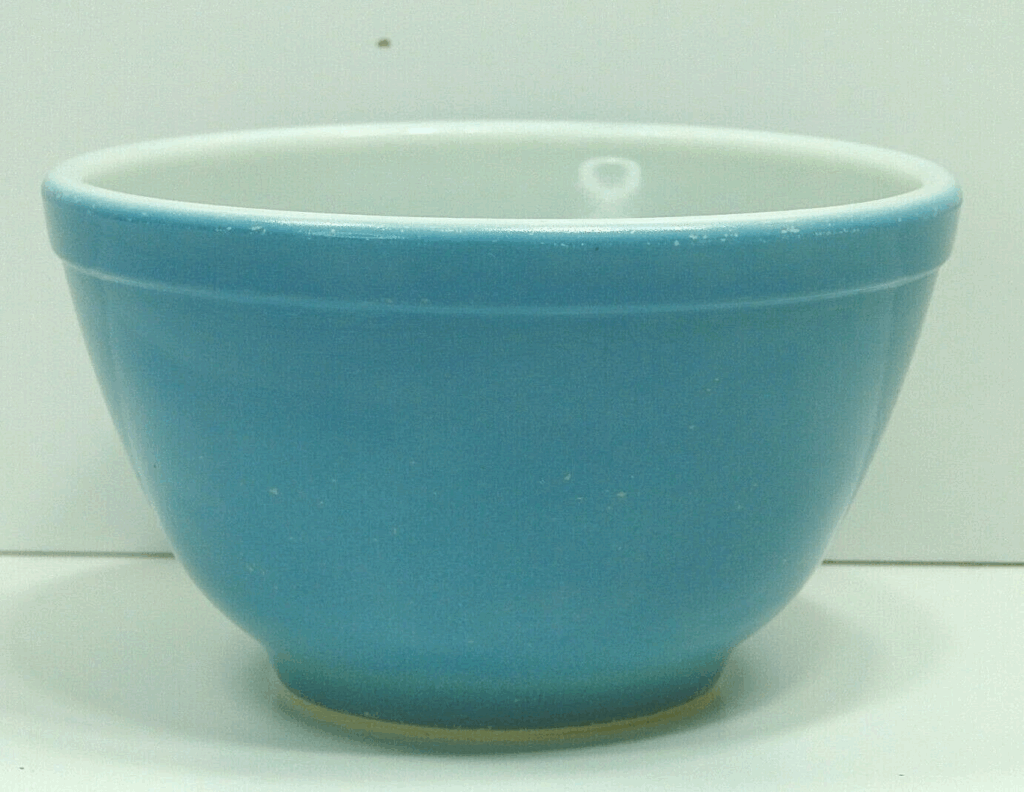
The Turquoise pattern, introduced in the late 1950s, became an instant classic due to its striking color and versatility. This solid turquoise design was used on a variety of items, including bowls, casseroles, and pie plates. The color was modern and bright, and it blended well with many kitchen decors. Today, Turquoise Pyrex can be worth anywhere from $30 to $200, depending on the piece and condition.
Turquoise pieces are highly collectible, especially those in excellent condition with no signs of fading. The simplicity of the color paired with the durability of Pyrex makes this set both practical and desirable. Collectors often look for specific pieces like the turquoise pie plates or the mixing bowls, which are iconic. The appeal of Turquoise continues to endure due to its classic beauty and practical use in the kitchen.
Pyrex Red Snowflake
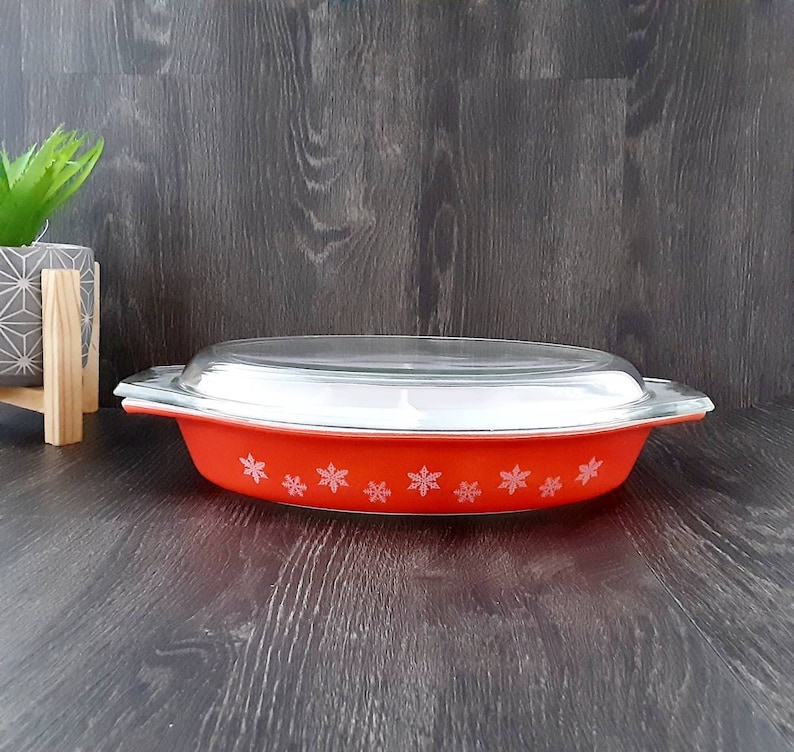
The Red Snowflake pattern, introduced in the 1960s, was one of the few Pyrex designs that incorporated a holiday theme. This pattern featured a delicate snowflake design in white on a rich red background, making it perfect for the holiday season. The pieces were sold as part of special holiday sets and included mixing bowls, serving dishes, and storage containers. The current market value for these items ranges from $30 to $120, with certain pieces fetching higher prices for their rarity.
Collectors love the festive nature of the Red Snowflake design, which is perfect for holiday displays and gatherings. These dishes are often passed down as family heirlooms, making them both functional and sentimental. In excellent condition, these pieces are highly sought after, especially if they come with original lids or matching sets. The seasonal appeal of Red Snowflake has ensured its place as a popular Pyrex pattern.
Pyrex Sunset
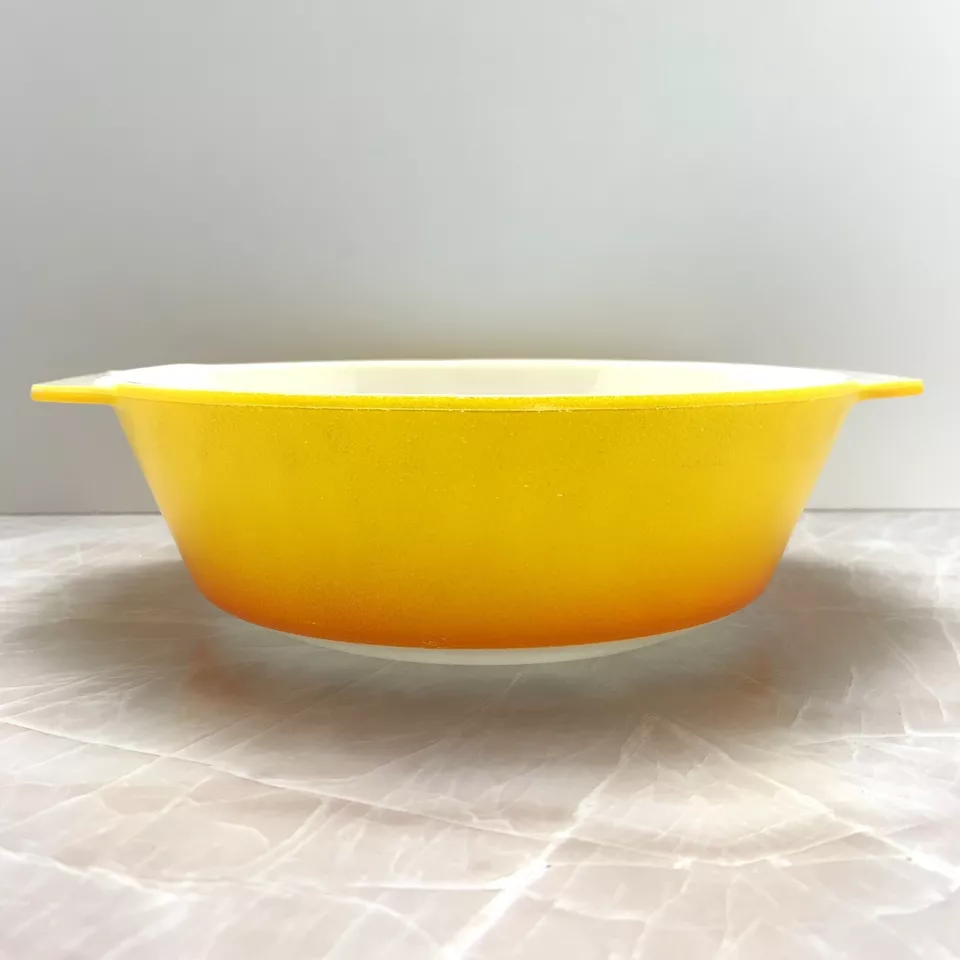
The Sunset pattern, introduced in the 1960s, is known for its warm, vibrant color scheme, with shades of orange, red, and yellow resembling a sunset. This striking pattern appeared on a variety of Pyrex items, including mixing bowls and casserole dishes. The colorful design made it a standout in mid-century kitchens, offering both practicality and style. The value of the Sunset pattern can range from $30 to $250, depending on the specific pieces and their condition.
Sunset Pyrex is especially sought after by collectors who appreciate its bold design and vibrant colors. These pieces evoke the energy and optimism of the 1960s, making them perfect for collectors of vintage kitchenware. The most desirable pieces include the large mixing bowls and casserole dishes, which are often the most used and hardest to find. The eye-catching design of Sunset continues to appeal to collectors looking for a piece of mid-century charm.
Pyrex Primary Colors
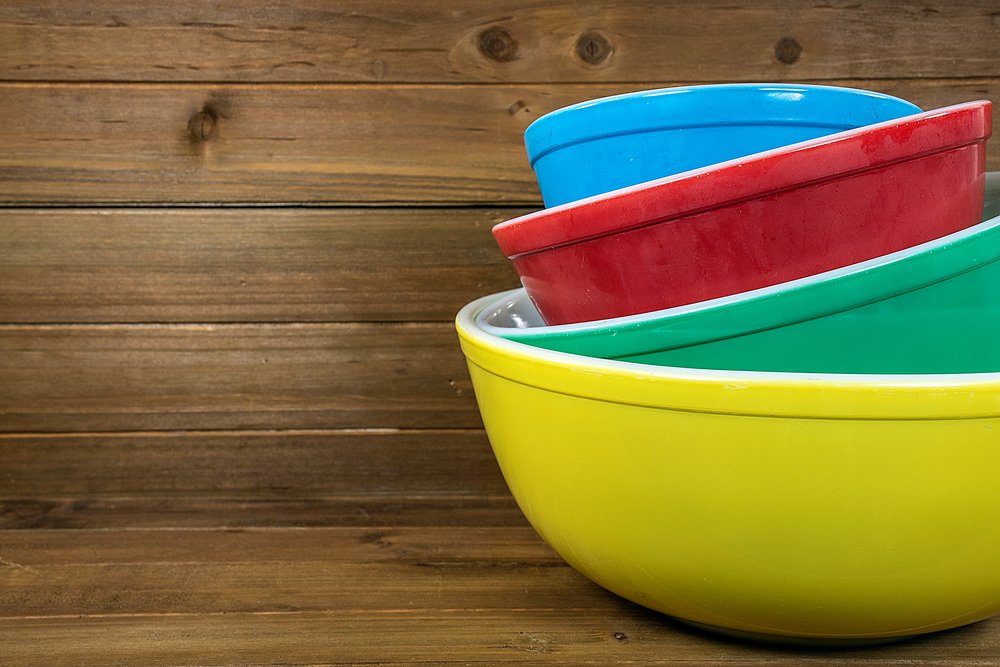
The Primary Colors pattern, first introduced in the late 1950s, featured bold red, blue, and yellow designs on Pyrex mixing bowls. These bright, simple colors made the set a timeless classic in American kitchens. The pattern was made in several sizes of mixing bowls, and it was beloved for its simplicity and utility. Today, these pieces can be valued anywhere from $40 to $150, with well-maintained sets reaching higher prices.
The Primary Colors Pyrex set remains one of the most recognizable and iconic designs. The simplicity of the three colors combined with the practicality of the dishes made it a household favorite. Collectors are particularly drawn to the complete sets, which often include the large, medium, and small mixing bowls. This design is still cherished for its bold aesthetic and nostalgic value.
The classic designs of 1950s and 1960s Pyrex dishes continue to capture the imagination of collectors and vintage enthusiasts. With their bold patterns and reliable durability, these pieces represent an era of kitchenware that still resonates today. Whether used for their original purpose or as decorative items, Pyrex dishes hold lasting value. Investing in these timeless pieces will not only bring style to your kitchen but also connect you to a rich tradition of American craftsmanship.
This article originally appeared on Avocadu.
